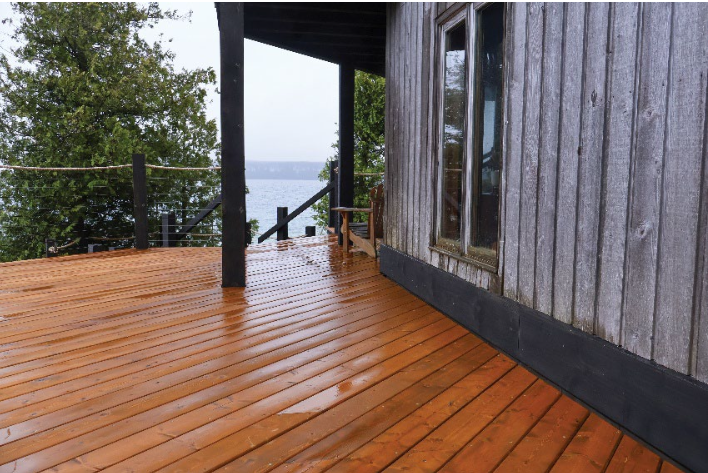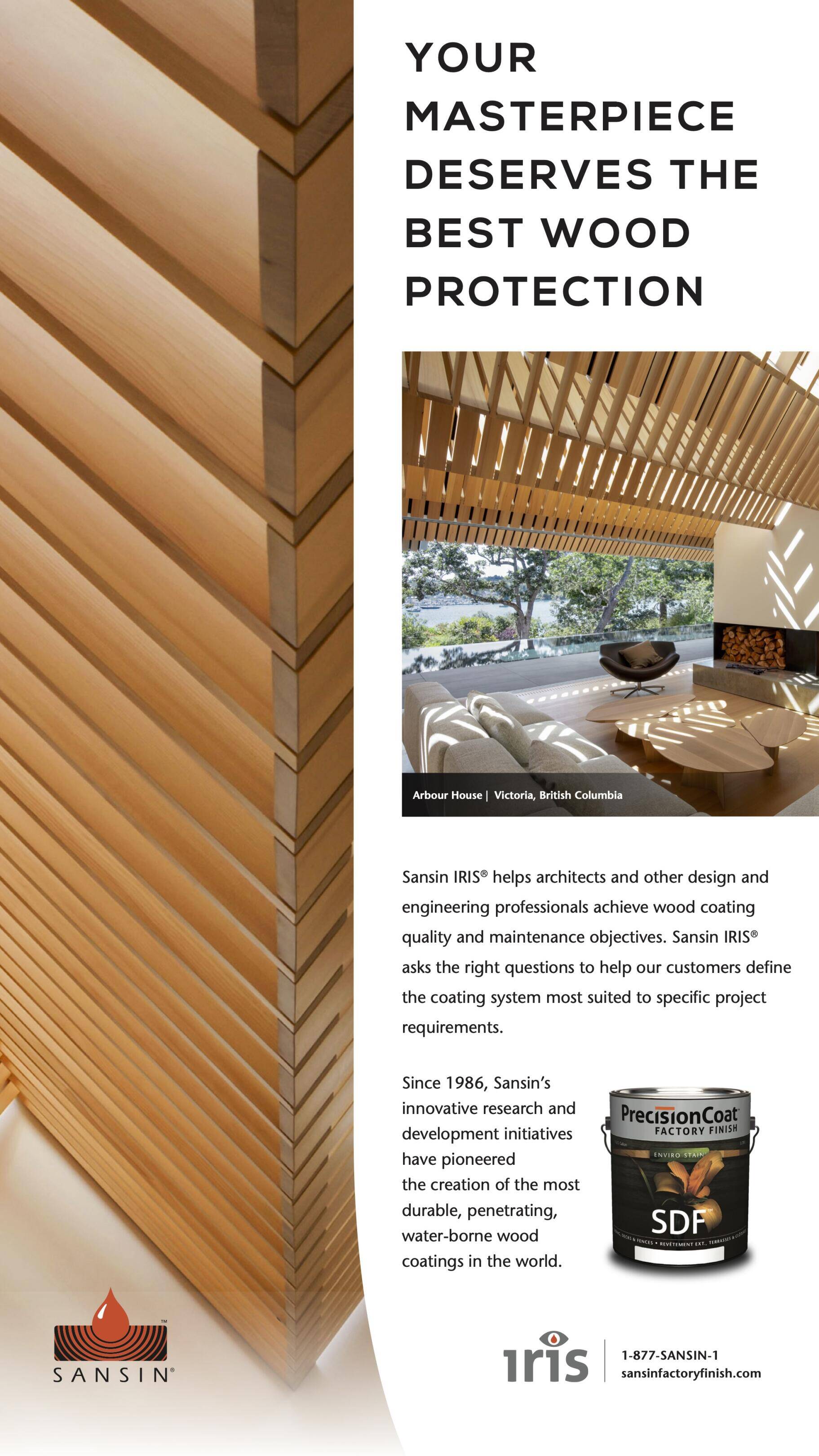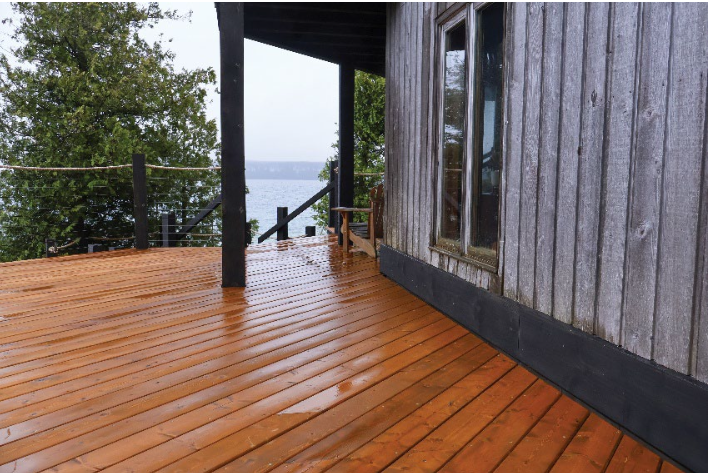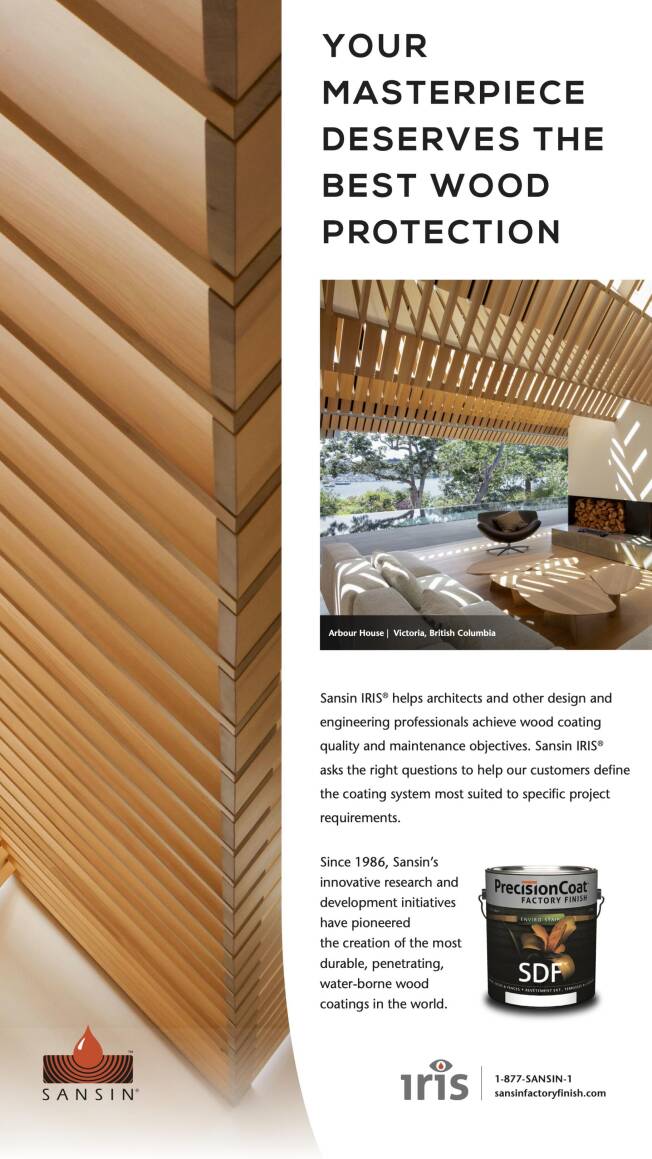
ASK AN EXPERT
Wood vs. Composite Decking
I’ve heard composite decking is more durable and eco-friendly than real wood. Is that true?
Real wood continues to outperform composite alternatives when it comes to durability, sustainability, comfort, and long-term value.
Certain wood species commonly used for decking—such as redwood and cedar—are naturally resistant to rot and insects. Other wood species benefit from pressure treatment which extends longevity and enhances performance in outdoor environments. Structurally, wood’s natural composition of strong cellulose fibres and lignin gives it exceptional tensile and flexural strength, allowing it to resist stress and distribute load effectively over time.
From an environmental standpoint, wood offers significant advantages. It is a natural, renewable material with the lowest embodied energy of any decking option. Wood stores carbon throughout its lifespan, emits fewer greenhouse gases, and can be reused, repurposed, or recycled at end of life. By contrast, composite materials—especially those made with virgin plastics—tend to have a higher environmental impact and limited recyclability.
Wood also excels in comfort and safety. Unlike composite surfaces, which can become hot in the sun and slippery in wet or humid conditions, real wood remains cooler underfoot and provides better traction. This makes it a more pleasant and practical surface, especially in variable climates.
Aesthetically, real wood offers natural grain, variation, and warmth that synthetic materials can’t replicate. Each board is unique, contributing to the visual richness of an outdoor space. And when comparing costs, real wood—particularly pressure-treated or cedar options—remains significantly more affordable than most composite products.
How can one determine the Fire Resistance Rating (FRR) and Sound Transmission Coefficient (STC) ratings for wood stud shear walls that include plywood on one or both sides and are finished with gypsum? To achieve a 1-hour rating, is it possible to use an existing tested gypsum assembly to meet both FRR and STC requirements and simply add plywood without affecting the ratings? Is there a better way to determine the FRR and STC ratings in this scenario?

For a deeper look at the performance, sustainability, and comfort advantages of wood decking, read the full article “Real Wood vs. Composite Decking” by Mauraine Bos and Sandeep S. Nair.



ASK AN EXPERT
Wood vs. Composite Decking
I’ve heard composite decking is more durable and eco-friendly than real wood.
Is that true?
Real wood continues to outperform composite alternatives when it comes to durability, sustainability, comfort, and long-term value.
Certain wood species commonly used for decking—such as redwood and cedar—are naturally resistant to rot and insects. Other wood species benefit from pressure treatment which extends longevity and enhances performance in outdoor environments. Structurally, wood’s natural composition of strong cellulose fibres and lignin gives it exceptional tensile and flexural strength, allowing it to resist stress and distribute load effectively over time.
From an environmental standpoint, wood offers significant advantages. It is a natural, renewable material with the lowest embodied energy of any decking option. Wood stores carbon throughout its lifespan, emits fewer greenhouse gases, and can be reused, repurposed, or recycled at end of life. By contrast, composite materials—especially those made with virgin plastics—tend to have a higher environmental impact and limited recyclability.
Wood also excels in comfort and safety. Unlike composite surfaces, which can become hot in the sun and slippery in wet or humid conditions, real wood remains cooler underfoot and provides better traction. This makes it a more pleasant and practical surface, especially in variable climates.
Aesthetically, real wood offers natural grain, variation, and warmth that synthetic materials can’t replicate. Each board is unique, contributing to the visual richness of an outdoor space. And when comparing costs, real wood—particularly pressure-treated or cedar options—remains significantly more affordable than most composite products.

For a deeper look at the performance, sustainability, and comfort advantages of wood decking, read the full article “Real Wood vs. Composite Decking” by Mauraine Bos and Sandeep S. Nair.


